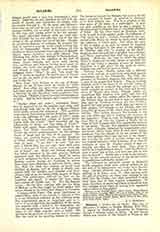

Balanaea, a titular see of Syria. The city of this name, a colony of Aradus (Strabo, XVI, 753), is placed by Stephanus Byzantius in Phoenicia, though it belongs rather to Syria. Its first known bishop was present at the Council of Nima in 325 (Lequien, Oriens Christ., II, 923). From that time to the sixth century the names of three others are known. At the latter date it was a suffragan of Apamea, the metropolis of Syria Secunda. When Justinian established a new civil province, Theodorias, with Laodicea as metropolis, Balanaea was incorporated with it, but continued to depend ecclesiastically on Apamea, till it obtained the status of an exempt bishopric. This was its condition in the tenth century, when it was directly subject to the Patriarch of Antioch. The Crusaders created there a Latin see, of which a bishop is known about 1200 (Lequien, III, 1189); the river near by it served as a boundary between the Kingdom of Jerusalem and the principality of Antioch. The Franks called it Valania according to the Greek pronunciation, the Mussulmans Bulunvoas. Owing to the unsafe conditions of the country the Latin bishop lived at Margat, a neighboring castle of the Hospitallers. Balanaea, today called Banias, is a little village at the foot of the hill of Qalcat el-Marqab, between Tartous (Tortosa) and Latakia (Laodicea); it is the residence of the kalmakam of the district. It numbers about 1,550 inhabitants, 1,200 Maronites, and 230 non-Catholic Christians; they cultivate chiefly onions, olive-trees, and very good tobacco. The roadstead is excellent, but is visited only by small boats.
S. VAILHE

